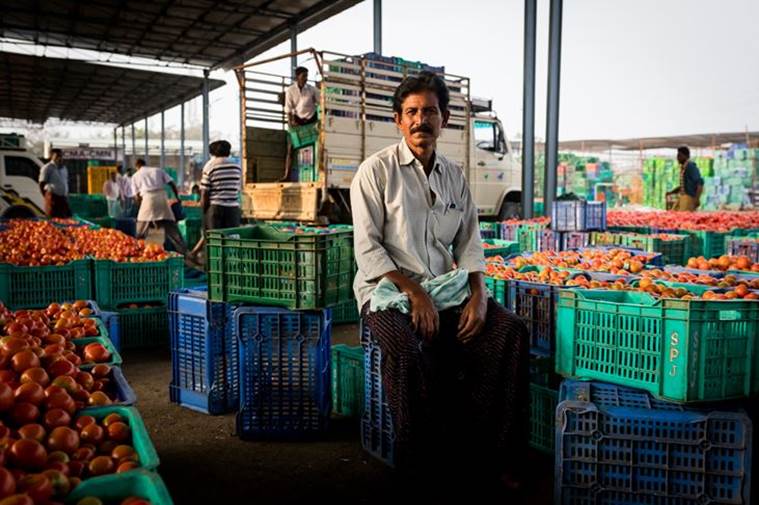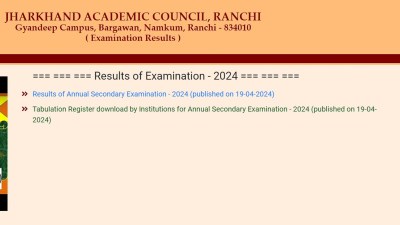- India
- International
Prices unsteady, Andhra Pradesh tries a seed experiment
Madanapalle, Andhra Pradesh; India’s largest market for tomatoes
 The favourable climate — neither too hot nor too cold — ensures tomato grows well around Madanapalle in Chittoor district. (Express Photo/Harsha Vadlamani)
The favourable climate — neither too hot nor too cold — ensures tomato grows well around Madanapalle in Chittoor district. (Express Photo/Harsha Vadlamani)
Only four persons among the younger generation in the 200-odd families of Vanamaladinne village near Madanapalle, which houses India’s (and probably Asia’s) largest market for tomatoes, are into farming. The spacious, brightly painted houses of the village, with SUVs, sedans and mini-trucks parked outside, suggest affluence born of the crop. But the unpredictable market and price volatility mean that many feel the compensation isn’t worth the risk.
S Venkata Ramana Naidu, one of Vanamaladinne’s well-known farmers, points to the price fall over just two months: from Rs 25-plus per kg to Rs 4 now. Last year, on the other hand, from April to November, a shortage meant tomato prices were consistently Rs 25-30 per kg, occasionally even crossing Rs 60.

Even at Rs 10 per kg, Naidu says, farmers can make a profit of Rs 1.25 lakh per acre. But any rate below Rs 5 means losses.
The favourable climate — neither too hot nor too cold — ensures tomato grows well in this region that’s at the intersection of Andhra, Karnataka and Tamil Nadu, spread in a 100-km radius around Madanapalle in Chittoor district. Prices start rising towards March when tomatoes grown near Delhi and Uttar Pradesh get exhausted. It takes 72 hours for tomatoes to reach Delhi markets from here.

 Ismail Baig at the Madanapalle market, after not getting enough price to even cover cultivation costs (Express Photo/Harsha Vadlamani)
Ismail Baig at the Madanapalle market, after not getting enough price to even cover cultivation costs (Express Photo/Harsha Vadlamani)
Naidu, whose tomato fields are irrigated by a drip system, with a special plastic mulch covering the soil to retain moisture, sells at either Madanapalle or the Kolar marketing yard in Karnataka. “When prices go up during summers or when the crop has failed elsewhere, we get good rates… Medium and big farmers can negotiate these price fluctuations, but small farmers end up in debt,” he says. “Some farmers leave the tomato in the fields to rot because the money is not enough to even cover the cost of labour to harvest. Transport charges and the 4 per cent commission fee on the sale price to agents are over and above this.”
READ | Govt keeps stepping in to drive down prices of onions; farmers ask what about us
Ismail Baig from Kandukuru of PTM Mandal, Chittoor district, who grows tomatoes on 1.5 acres, says that to get 160 boxes of tomatoes (28 kg each) to Madanappale, he paid Rs 22 per box as transportation and other charges. After two hours of bargaining, he got Rs 100 per box. “It was not enough to recover even my cultivation costs,” Baig says. Balineni Ravindra Prasad of Vanamaladinne is among those who has left his ripe tomatoes for now on his 5-acre field.
 S Naidu, who failed to get son to take up farming, is raising a mango orchard as a retirement plan (Express Photo/Harsha Vadlamani)
S Naidu, who failed to get son to take up farming, is raising a mango orchard as a retirement plan (Express Photo/Harsha Vadlamani)
A Subbaraghava Raju, Secretary of the Madanapalle Agriculture Marketing Yard, admits that price fluctuations can devastate farmers, and hence welcomes the Union Budget’s proposal of tax breaks for farm producer organisations (FPOs), formed by them. “FPOs can help farmers unite and negotiate a steady price,” he says. However, he admits, “Medium and big farmers may not be interested, as they can afford to take losses but may not be willing to give up the quick money they make when prices go up suddenly.”
READ | Ahead of harvest, memory of rotting potatoes in 2017 leaves farmers ‘nervous’
As for the suggestion by the Andhra government that they take recourse to food processing units, farmers say it is not practical right now. “Such units come to yards to purchase only when stocks are being sold at throwaway prices. If the government sets up factories for tomato puree or ketchup or juice, they should purchase the stocks at prices that are beneficial to all parties. Then we would sell entire stocks to factories from the farm itself,” says farmer K Ramana of Chittoor.
Secretary Raju contests this claim of private players benefiting, pointing to the downed shutter of Reliance’s procurement office at the Madanapalle market yard. “Their procurement here is over. Now they are purchasing vegetables in Karnataka for their outlets. If there is a glut in the market, even at Rs 2 or 3 per kg, there won’t be many buyers.”
The Andhra Pradesh government has started a programme to address the fluctuating tomato prices. Horticulture Commissioner Chiranjeevi Chowdhary says they have tied up with Japanese company Kagame, which is supplying seeds on an experimental basis to grow tomatoes that can be used in food processing factories globally.
Anji Reddy, a big farmer owning 20 acres, has sown this seed on 5 acres. “If the experiment is successful, all farmers can sow two varieties — one for the open market and the other for food units — and prevent excessive production and price fluctuations,” Reddy says.
Meanwhile, it is hard to find a farmer below 45 years in the over 1,500 acres of cultivable land in Vanamaladinne. Naidu says he tried very hard to persuade son Sukumar to join farming, but he chose engineering and now works at an IT major in Bengaluru. Prasad, whose son too works for a corporate in the city, laments that he chose the Rs 20,000 per month job over the family profession.
Many of the elders are now seeking retirement security in mango orchards. “We are reducing the acreage under tomato and other crops and started growing mango trees. Once the trees grow, they don’t need much care. After a few years, the orchards will start paying rich dividends,” says Naidu, who is growing mango on 5 acres.
Prasad, who has also done the same, says he welcomes the Centre’s suggestions. “But it will take sustained effort from governments to bring back confidence in farming… The Centre’s measures will take at least a decade to trickle down.”
Apr 19: Latest News
- 01
- 02
- 03
- 04
- 05






































